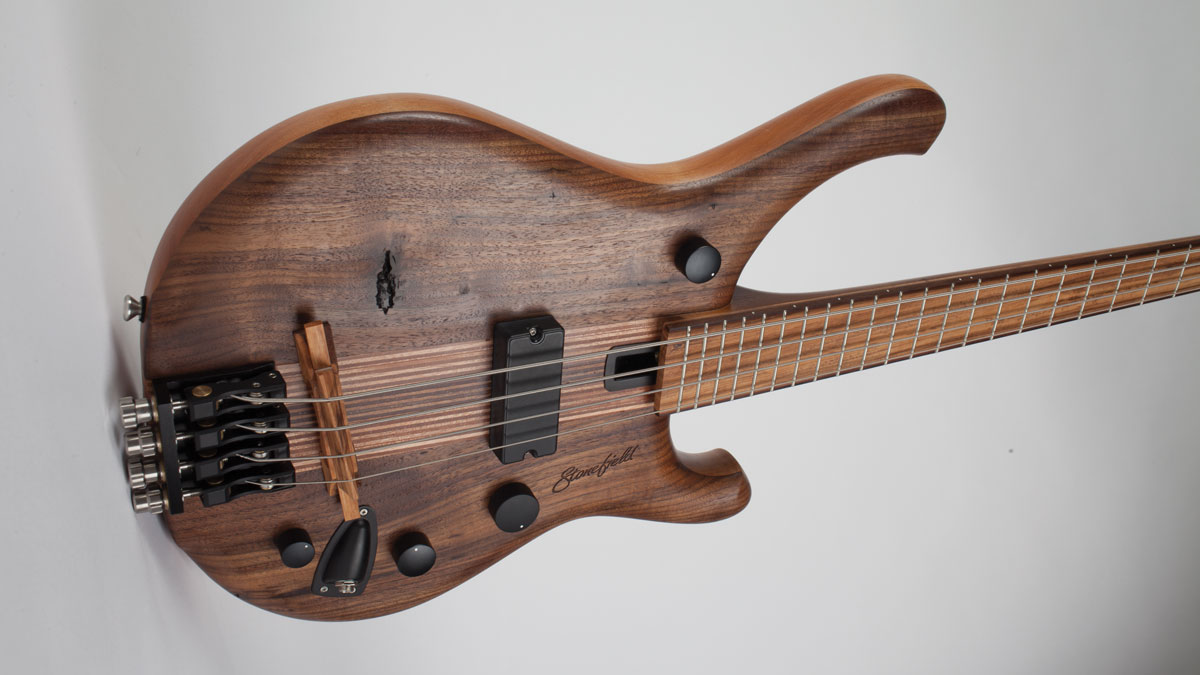MusicRadar Verdict
An interesting instrument that does things differently but never to the detriment of the instrument. If passive basses are your thing, test one soon!
Pros
- +
Ergonomically different, but everything works, with a varied tonal palette.
Cons
- -
The price will always limit its appeal, and resale value may be limited.
MusicRadar's got your back
It's a few months since we met Tomm Stanley at the London Bass Guitar Show, where he unveiled his Stonefield creation.
We looked at a Slimline five-string model recently, and here for our delectation is a four-string model featuring classic string spacing. There's no disputing the distinctive nature of these instruments. The five-string threw us some enjoyable curveballs - does the four-string model offer more of the same?
Build
The rounded body curves, sculpted cutaways and combination of Fijian salusalu wood, walnut and southern hemisphere through-neck The neck is sizeable but comfortable, with a 42mm nut width and a full C-shaped profile: the 19mm string spacing makes it a very easy neck to play and navigate.
There are no front facing position markers but white dots have been used on the side of the neck, so visually it's a clean bass when viewed from the front, the warm timber hues creating an impressive aesthetic. Water-based lacquers have been used to protect the timbers, and the body has had two coats of Danish oil finish applied, followed by a single coat of teak oil.
Sounds
The four-control system incorporating volume, bass roll-off, treble roll-off and the 10-setting midrange control (using a push/pull control with five settings in each position and an additional bypass setting) give the player serious flexibility to shape the tone, so don't expect a selection of mundane passive tones.
There really are some impressive 'bass colours' available here. Unsurprisingly, in an acoustic context, the instrument resonates and sustains in an impressive fashion: vibrancy is definitely what this bass is all about.
Plugging in, the smooth, rounded tones that were evident with the five-string are here again, supplemented with an added spring in their step, maybe due to less timber in the construction.
Want all the hottest music and gear news, reviews, deals, features and more, direct to your inbox? Sign up here.
The woody character still stands out but a throaty, upper-mid bite can also be heard, especially in the upper register. Fingerstyle playing takes some of the attack away, but switch to playing with a pick and that initial bite on the string stands out clearly.
Although the bass appears quite chunky, the playing experience is very comfortable after an initial period of adjustment and the natural character of the instrument is incredibly pleasing. The bass and treble roll-offs work well to offer some light and shade to your tone: the increase
